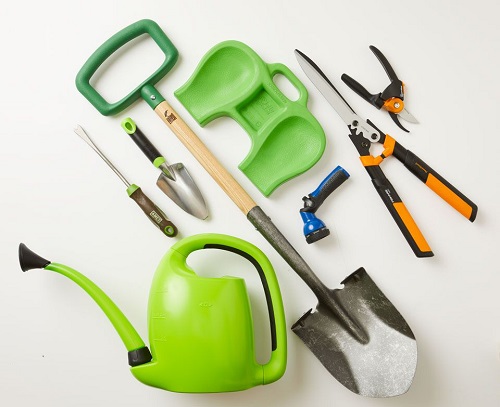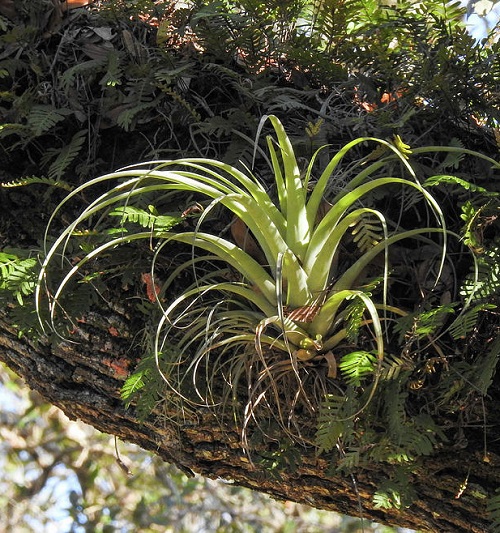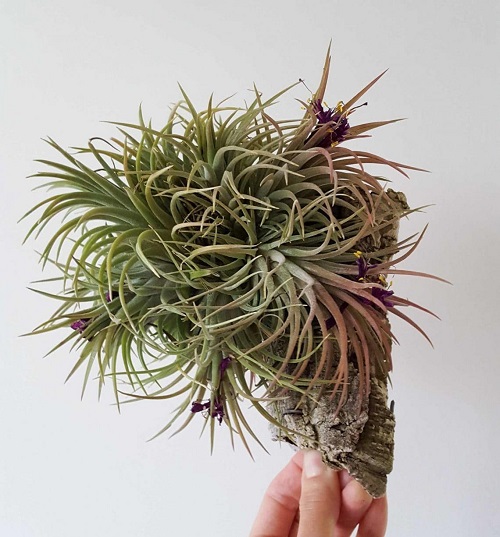Learn How to Remove Air Plants from Trees in this guide. Discover tips for detaching tillandsia without harming them.

Removing air plants from trees can be tricky, but with the right techniques, it’s possible to do so safely and without causing harm. In this guide, you’ll explore How to Remove Air Plants from Trees with effective methods, ensuring both the plants and trees remain healthy.
Explore why My Air Plant is turning Red here
Why Remove Air Plants from Trees?
Before you delve into the removal process, it’s essential to understand why you might want to remove air plants from trees. Here are a few common reasons:
Relocation: You may wish to relocate the air plants to a different location where they can thrive better or be part of a different arrangement.
Propagation: If your air plant has produced offsets or pups, you might want to remove them to propagate new plants.
Maintenance: Routine maintenance and cleaning of air plants can be more comfortable when they are not attached to trees.
Tree Health: In some cases, air plants may become too dense, potentially limiting sunlight and air circulation to the tree’s branches. In such cases, it may be necessary to thin out the air plants to promote tree health.
Tools and Supplies for Air Plant Removal
- To successfully detach air plants from trees while minimizing stress to the plants and the host tree, it’s crucial to have the right tools and supplies.
- Firstly, you’ll need a pair of sharp, clean scissors or pruning shears to make precise cuts without causing unnecessary damage.
- Additionally, a spray bottle filled with water can be handy for misting the air plants, making them more pliable and easier to handle during the removal process.
- If you’re working on a tree with thicker branches, consider using a soft brush or a toothbrush to remove dirt or debris from the plant’s roots gently.
- Lastly, prepare a soft, clean surface like a towel or a piece of cloth where you can place the removed air plants before their next destination.
- These essential tools and supplies will help ensure a smooth and safe air plant removal.
Read About How to Grow Air Plant from Seeds here
How to Remove Air Plants from Trees
Removing air plants from trees requires care and precision to protect the plants and the host tree. Follow these steps for a successful and gentle detachment:
Gather Your Supplies
For removing air plants from trees, gather sharp, clean scissors or pruning shears and a spray bottle filled with water. Keep a soft brush or toothbrush for cleaning.
Assess the Situation
Examine the air plant’s attachment points on the tree. Look for any dead or dried-up leaves, as these can often be the easiest parts to remove.
Mist the Air Plant
Lightly mist the air plant with water using the spray bottle. This will make the plant more pliable and reduce the damage risk during removal.
Gently Wiggle and Rotate
Carefully wiggle and rotate the air plant at its base, attempting to loosen it from the tree. Be patient and avoid pulling forcefully, as this can harm the plant.
Cut the Attachments
If the air plant doesn’t come free easily, use sharp scissors or pruning shears to snip the attachments to the tree. Make clean cuts as close to the tree as possible. Avoid cutting the roots of the air plant.
Remove Debris
Use a soft brush or toothbrush to gently clean any dirt or debris from the air plant’s roots.
Allow the Air Plant to Rest
Place the removed air plant on a clean, soft surface. Allow it to rest and air dry for a few hours before reattaching it or transferring it to a new location.
Care for the Air Plant
After removal, ensure the air plant is placed in an appropriate environment with proper light and air circulation to promote its continued health and growth.
Check Out Tips for Mounting Air Plants here
Ideal Tree Species for Air Plants
Air plants, also known as Tillandsia, have evolved to thrive on various surfaces, including trees. When choosing trees to host air plants, it’s essential to consider factors like climate, humidity, and the specific needs of the air plant species. Generally, hardwood trees with textured bark are the most suitable hosts. Oak trees, pine trees, cypress trees, and citrus trees are popular choices due to their sturdy branches and textured bark, which provide ideal attachment points for air plants.
Read About Air Plant Stricta Care here
Watering and Feeding for Air Plants After Tree Removal
After removing air plants from trees, it’s crucial to provide them with proper care to ensure their continued health and growth. Watering and feeding are essential aspects of this care regimen.
Water
Air plants should be watered regularly to maintain their hydration. The watering frequency depends on factors like the air plant species, local climate, and the environment in which they are placed. In most cases, a weekly soak in tepid water for about 30 minutes is recommended. However, allow the plants to fully dry upside down after watering to prevent rot. Additionally, consider misting them lightly between soakings, especially in drier climates or during hot weather. Pay attention to the moisture needs of your specific air plant species and adjust the watering schedule accordingly.
Feed
While air plants primarily absorb nutrients through their trichomes (tiny hair-like structures on their leaves), they can benefit from occasional fertilization. Use a specialized air plant fertilizer diluted to half or one-quarter strength, and apply it during the watering process every 3-4 weeks. This provides the necessary nutrients without overwhelming the plant. Remember that over-fertilization can harm air plants, so it’s best to err on the side of caution when feeding them. Adjust the feeding frequency based on the growth and vitality of your air plant.
Check Out How to Tell If An Air Plant is Dead here
Tips to Take Care of Air Plants After Tree Removal
- After removal, carefully examine the air plants for any remaining debris or damaged areas. Use a soft brush or toothbrush to gently clean the plants, especially their roots and base, to prevent potential issues.
- Let the air plants air dry completely in a well-ventilated area before reattaching them or placing them in a new location. This helps prevent rot and fungal growth.
- Choose an appropriate location for your air plants. They thrive in bright, indirect light. Avoid exposing them to direct sunlight, as it can scorch their leaves. They can also tolerate lower light conditions, but growth may be slower.
- In drier environments or during hot weather, mist your air plants lightly between soakings to provide additional humidity. However, misting should not replace the regular soaking process.
- Ensure good air circulation around your air plants. Proper ventilation prevents moisture buildup and helps prevent rot.
If you display your air plants in containers, ensure they have proper drainage. Air plants should never sit in standing water, which can lead to rot.
Read About How to Attach Air Plants to Wood here
Frequently Asked Questions
Q. How do I attach air plants to a tree or another surface?
Air plants attach themselves naturally to their roots. Simply place them on the desired surface and allow their roots to establish a grip over time. You can also use non-harmful attachments like plant-friendly glue or fishing lines if needed.
Q. Can I reattach air plants to a tree after removing them?
Yes, you can reattach air plants to a tree or another surface using the same methods as when initially attaching them. Ensure the tree bark or surface is clean and debris-free before reattaching.




